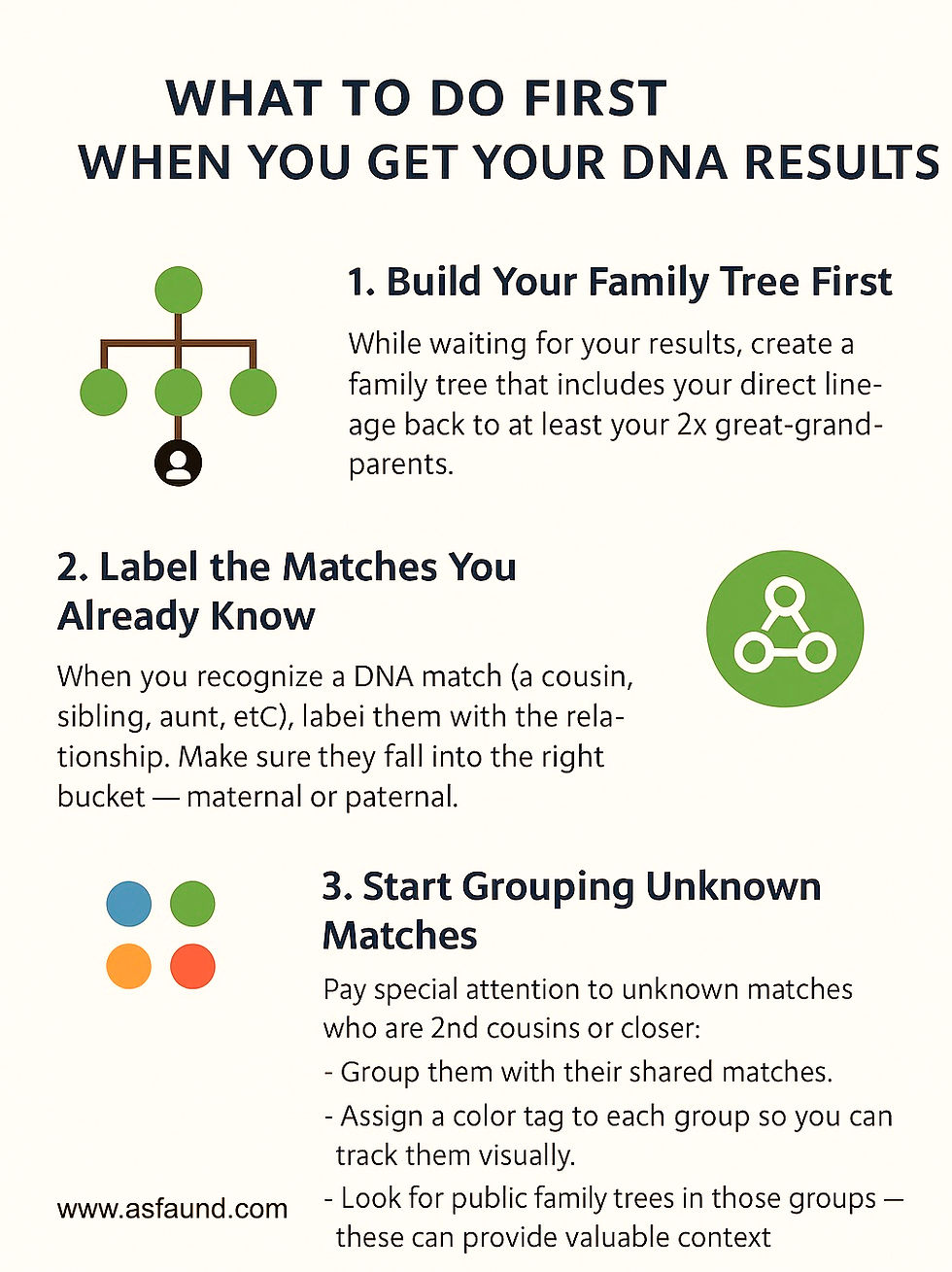X Chromosome use in Genealogy Research
- Julie Tonseth
- Mar 6, 2022
- 3 min read
One of the newer focus items in understanding DNA matches is the use of a chromosome browser. This analysis tool can assist in either traditional genealogy research or searching for a birth parent. DNA enthusiasts use the browser tool to map their family tree to each section of their 23 pairs of chromosomes. This level of detailed analysis intrigues me, but using the chromosome browser to identify relationships between individuals is my area of focus.
A recently completed case for an adoptee required the mapping of his “X matches” to confirm the maternal relationship. What is an X match? Any DNA match that shares a segment on your X chromosome is labeled as an “X match.” This client’s mother was from an endogamous community, which made the untangling of the trail back to the female Most Recent Common Ancestor (MRCA) on his matrilineal line look like a map of the London Underground.
There are ways to use X matches in a simpler fashion if you just remember the rules of DNA as shown in the graphic below. The X and Y chromosomes determine the sex of the child and, therefore, are called the sex chromosomes. Females have two X chromosomes, whereas males have one X and one Y chromosome.
Women (X,X)

Men (X,Y)

This chart from a blog also gives you an example of how you inherit the sex chromosomes.[1]

Using X matches has its limitations if you are a female, as you can see from the chart above. Fathers of female children pass down the exact X chromosome that came from their mother, that female child's paternal grandmother. Mothers of females can pass down either X chromosome intact, or mix them up through recombination and create a new X chromosome to pass down.
If you and your X match are female, you will not be able to tell if you match on the paternal X or the maternal X. The science is not yet defined enough to tell you which X chromosome came from which parent. The only way to determine which “x” you share is if you have tested other relatives, such as a male sibling or if you both have accurate family trees. Additionally, if your father and/or mother has tested on a site like FTDNA, you would be able to compare their X chromosome to your match. You could also use the maternal haplogroup as a clue to whether the match is maternal or paternal, but it is not always 100% positive proof.
The news is much better if you are a male who has an X match with a female or male tester. Since your X chromosome is only from your mother, anyone who matches on your X chromosome has to be from your maternal side. This is great news but it is oversimplified. This person is related to you on your maternal side, but you don’t know much more beyond that. Your mother has two X chromosomes, one from each parent, and it is not clear whether the match is to your maternal grandmother or maternal grandfather’s mother. If your goal is to only identify maternal vs. paternal matches, you can stop here at this level of detail.
If your goal is to assign a maternal grandparent to your X match, you will have to map your “in common with” matches. That process requires an accurate family tree on both sides in order to compare trees to map the inheritance of the X chromosome.
When you add DNA matches to your tree, make a note of whether they are an X match or not. It can be in the name, such as “Jane Doe (81 cM, X),” where 81 cM is the total of shared DNA, not the length of the shared amount on the X chromosome. You can add a special tag or even replace the profile icon with a picture of an X. This creates a fast, visual clue as to where your DNA matches land on your tree.
Understanding the inheritance pattern of the X chromosome is helpful when the maternal line is unknown. If the case subject is male, X matches can be used to unlock matrilineal family lines, but it requires good research that covers all possible scenarios. Test all scenarios using both positive and negative tests against the X matches until there is a clear path to the right female MRCA. Confusion around using these matches effectively is going to happen, so reach out to your network to check your work.
[1] Louise Coakley, “X DNA’s Helpful Inheritance Patterns,” blog post, Genie 1 & Genetic Genealogy : https://genie1.com.au/x-dnas-helpful-inheritance-patterns/ (viewed 24 Feb 2022)
Additional References:
1.Bettinger, Blaine T. “The Family Tree Guide to DNA testing and Genetic Genealogy,” Chapter 7, pg 140, chart D, 2nd edition, 2019, Family Tree Books.
2. “Chromosome Browser Introduction,” Familytreedna.com (https://help.familytreedna.com/hc/en-us/articles/360004591836-Chromosome-Browser-Introduction#accessing-your-chromosome-browser-0-0 : viewed 1 Mar 20



Comments